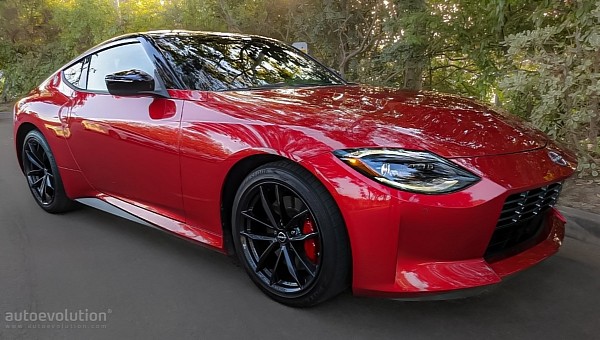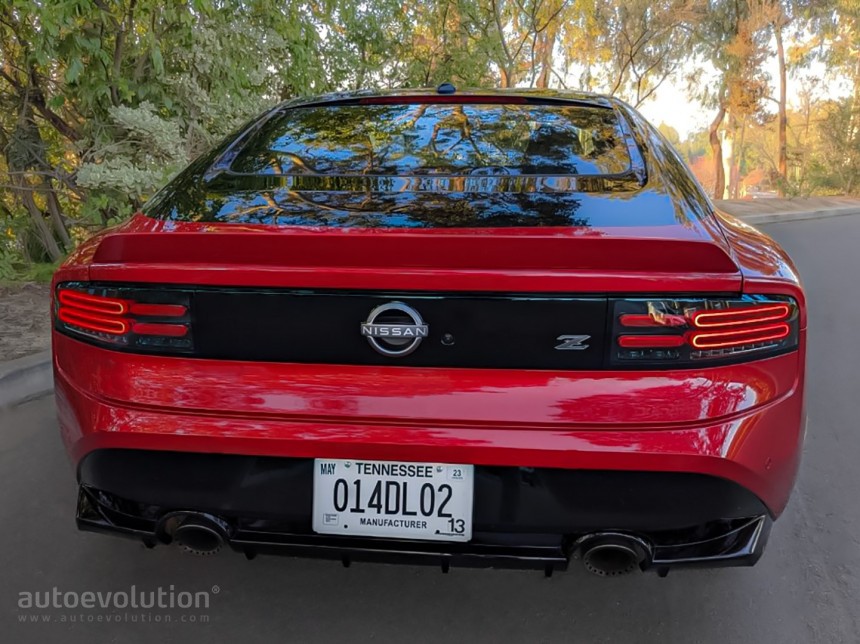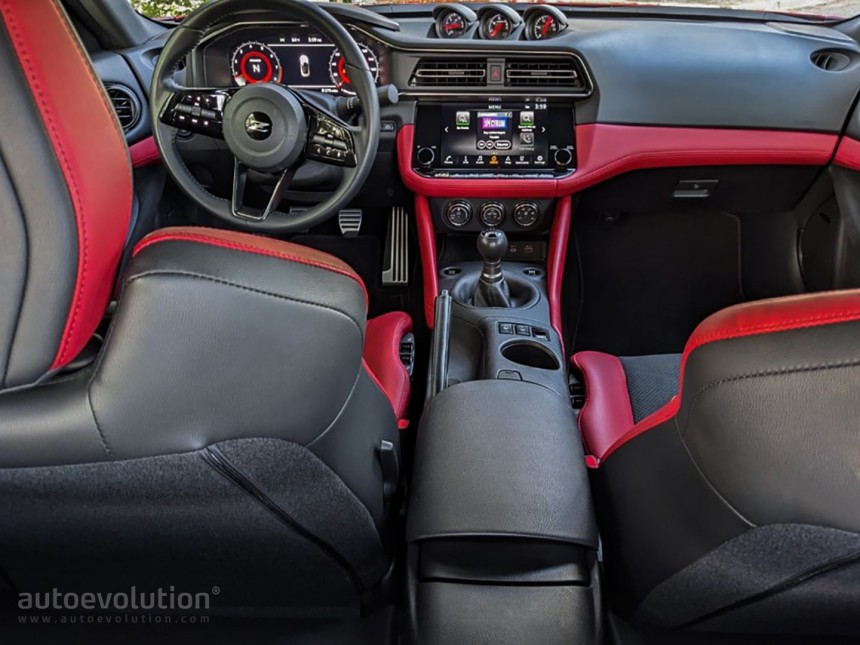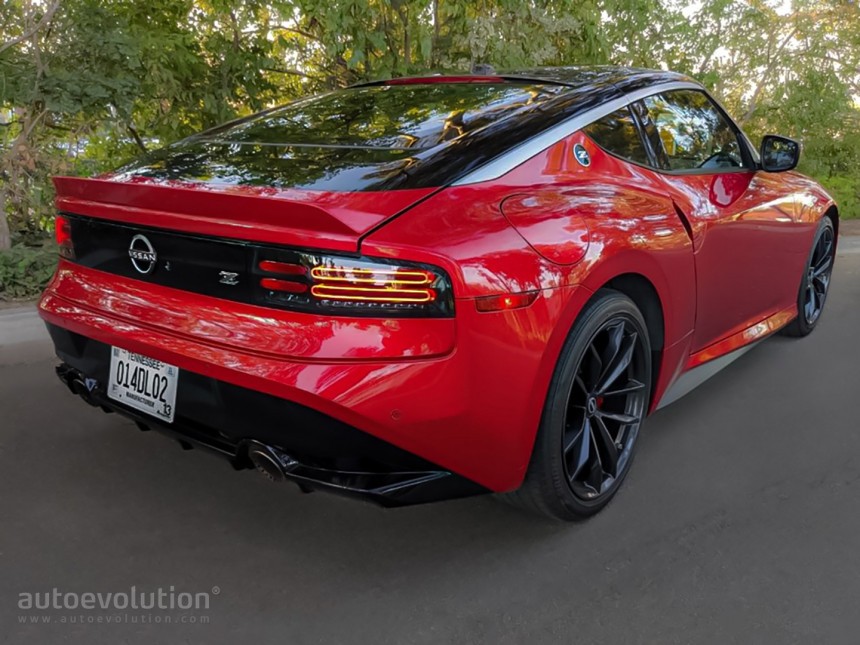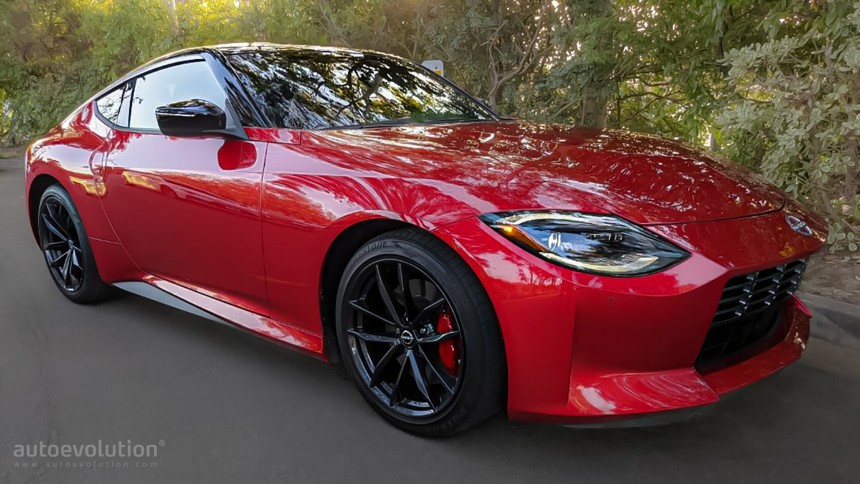Driven: 2023 Nissan Z – Redefining an Icon as an Instant Classic
Few cars on the road today can be considered icons. Luckily for us and Nissan, the manufacturer has breathed considerable new life into one, bringing the legendary Z car back to its franchise in a way that not only pays considerable homage to the original 240Z but also tips its hat to subsequent generations through design cues and mechanical bits.
We had the opportunity to drive the 2023 Nissan Z during North American Car of the Year testing last October, as well as spending a week in what is one of the three finalists (alongside the Acura Integra and Genesis G80 Electric) for the prestigious award. Here’s what we found:
But there’s also a bit of the more recent 370Z baked into the overall dimensions thanks to its wide stance and subtle coke bottle curvature of the side panels that flow into the car’s muscular haunches.
When you look at it from behind, you’ll see a set of horizontal taillamps tied together by a blacked-out panel that has the feel of the 300ZX. Also used on previous Z cars is the rear lip spoiler and the double bubble roof treatment.
Framed by the steering wheel, a large configurable digital instrument cluster offers a variety of graphic displays. These range from an old-school look with a dominant tachometer to a more modern take, with a vehicle icon in the center flanked by a tach on the left and a speedometer on the right.
A 9-inch touchscreen is neatly integrated into the dash center and includes navigation and infotainment, as well as analog volume and tuning knobs. A row of redundant buttons along the bottom edge allows you to instantly change screens without having to hunt and peck on the main screen. Below that, large dials are used for the climate controls.
Perched atop the center stack are three analog gauges for boost pressure, turbo speed, and voltage, a neat retro touch that dates to the original Z. Soft-touch materials on the dash, door panels, and center console, along with the leather-clad seating surfaces give the Z an upscale appearance.
As a two-seat sports car, the interior of the Z is snug, but the seats provide plenty of comfort, and despite its low-slung nature, visibility out of the cockpit is good. The rear cargo area behind the seats is large and easily accessible through the hatch. I found plenty of room for a set of golf clubs, and the load space can easily handle a couple of suitcases for an extended road trip. Another functional piece is the satin finish cross beam behind the rear seats that provides additional torsional rigidity.
The original 240Z featured a 2.4-liter inline six rated at 151 horsepower (153 ps) and 146 lb-ft (198 Nm) of torque driving the rear wheels. It employed a 5-speed manual, had front disc/rear drum brakes, and tipped the scales at around 2,300 pounds. The 2023 Nissan Z boasts 400 horsepower (405 ps) and 350 lb-ft (475 Nm) of torque from its 3.0-liter twin-turbo V6. It’s also rear-wheel drive, offers six manually selected forward gears (nine, if you opt for the automatic), and has disc brakes at all four corners. The new Z weighs a touch over 3,400 pounds (1,542 kg).
You can see a world of difference in the performance—back then, the 240Z had a top speed of 125 mph (201 kph) and was good for a 0-60 mph sprint of 8.0 seconds, which is pretty much now in the realm of a compact SUV. While Nissan hasn’t given out performance figures yet, the Z is capable of sub-5 second acceleration to 60 mph (97 kph) and has a top speed of more than 135 mph (217 kph).
It feels every bit as quick as you’d expect. Even though it shares much of the underpinnings of the previous 370Z, the 68 extra horses (69 ps) and additional 80 lb-ft (108 Nm) of torque the 3.0-liter engine puts out over the previous 3.7-liter unit make their presence felt. Under hard acceleration, you can feel the rear axle squirming about as the traction control system works to keep the car pointed in a straight line.
The 6-speed manual works well enough, but you must remain patient in your moves. Rush the gearchanges, and you may find the setup a tad balky. But the shifter itself has a great feel thanks to the large baseball-size knob. A modern touch that’s also welcome is the S-mode, which will automatically blip the throttle on downshifts. It not only makes for smoother gearchanges, but it also sounds pretty cool.
The structure is tight, the steering quick and precise, and the brakes quite easy to modulate. The Nissan Z offers solid performance in a tidy package. There’s an abundance of mid-range passing power and only the slightest hint of turbo lag when pushing the Z hard. There may be faster and slightly more polished sports cars out there, but they cost thousands more.
That said, Nissan should be commended for its seat comfort, basic cockpit ergonomics, the ability to find and use various switches and systems with minimal distraction, and an overall high level of quality to the vehicle build.
There is some practicality in the liftback body style, a modicum of room to haul stuff in the load area, and all the bells and whistles, from a great sound system to the latest in adaptive cruise control and driver assists and warnings to allow you to make long road trips in comfort.
Our test car, a Z Performance trim, starts at $49,990. Add in a $1,695 two-tone black over red paint scheme, $500 illuminated kick plates, and $400 worth of floor mats, and the bottom line totals $53,610, including $1,025 delivery. That’s plenty of bang for the buck when you consider a Porsche Cayman starts at more than $64,000.
The Z has the looks, performance, and pricing that are true to the spirit of the original 240Z.
Design evaluation
The look of the new Z is, in a word, stunning. It hews closely to the concept car that was first revealed nearly three years ago. The look of the car borrows heavily from the original 240Z, from its shark nose grille treatment to its long nose and short rear deck proportions in profile. The LED-rimmed headlamps recall the headlamp nacelles of the original, as do the script Z badges.But there’s also a bit of the more recent 370Z baked into the overall dimensions thanks to its wide stance and subtle coke bottle curvature of the side panels that flow into the car’s muscular haunches.
When you look at it from behind, you’ll see a set of horizontal taillamps tied together by a blacked-out panel that has the feel of the 300ZX. Also used on previous Z cars is the rear lip spoiler and the double bubble roof treatment.
Interior assessment
The cabin is a delightful blend of modern and classic touches that hits all the right notes. A beefy three-spoke steering wheel with a large Z logo greets you when you open the door and drop down in the well-bolstered bucket seat. The wheel is equipped with secondary controls for cruise control, audio, and instrument displays.Framed by the steering wheel, a large configurable digital instrument cluster offers a variety of graphic displays. These range from an old-school look with a dominant tachometer to a more modern take, with a vehicle icon in the center flanked by a tach on the left and a speedometer on the right.
A 9-inch touchscreen is neatly integrated into the dash center and includes navigation and infotainment, as well as analog volume and tuning knobs. A row of redundant buttons along the bottom edge allows you to instantly change screens without having to hunt and peck on the main screen. Below that, large dials are used for the climate controls.
Perched atop the center stack are three analog gauges for boost pressure, turbo speed, and voltage, a neat retro touch that dates to the original Z. Soft-touch materials on the dash, door panels, and center console, along with the leather-clad seating surfaces give the Z an upscale appearance.
As a two-seat sports car, the interior of the Z is snug, but the seats provide plenty of comfort, and despite its low-slung nature, visibility out of the cockpit is good. The rear cargo area behind the seats is large and easily accessible through the hatch. I found plenty of room for a set of golf clubs, and the load space can easily handle a couple of suitcases for an extended road trip. Another functional piece is the satin finish cross beam behind the rear seats that provides additional torsional rigidity.
Driving take
While there’s plenty here to remind you of the original Z, the driving experience has benefited greatly thanks to advancing technology that allows for an abundance of power, reasonably good fuel economy, and all sorts of driver aids to keep you out of trouble.The original 240Z featured a 2.4-liter inline six rated at 151 horsepower (153 ps) and 146 lb-ft (198 Nm) of torque driving the rear wheels. It employed a 5-speed manual, had front disc/rear drum brakes, and tipped the scales at around 2,300 pounds. The 2023 Nissan Z boasts 400 horsepower (405 ps) and 350 lb-ft (475 Nm) of torque from its 3.0-liter twin-turbo V6. It’s also rear-wheel drive, offers six manually selected forward gears (nine, if you opt for the automatic), and has disc brakes at all four corners. The new Z weighs a touch over 3,400 pounds (1,542 kg).
You can see a world of difference in the performance—back then, the 240Z had a top speed of 125 mph (201 kph) and was good for a 0-60 mph sprint of 8.0 seconds, which is pretty much now in the realm of a compact SUV. While Nissan hasn’t given out performance figures yet, the Z is capable of sub-5 second acceleration to 60 mph (97 kph) and has a top speed of more than 135 mph (217 kph).
It feels every bit as quick as you’d expect. Even though it shares much of the underpinnings of the previous 370Z, the 68 extra horses (69 ps) and additional 80 lb-ft (108 Nm) of torque the 3.0-liter engine puts out over the previous 3.7-liter unit make their presence felt. Under hard acceleration, you can feel the rear axle squirming about as the traction control system works to keep the car pointed in a straight line.
The 6-speed manual works well enough, but you must remain patient in your moves. Rush the gearchanges, and you may find the setup a tad balky. But the shifter itself has a great feel thanks to the large baseball-size knob. A modern touch that’s also welcome is the S-mode, which will automatically blip the throttle on downshifts. It not only makes for smoother gearchanges, but it also sounds pretty cool.
Everyday living
Let’s face it, this is a two-seat sports car. While it can serve as a daily driver, that’s not its natural environment. This is a car that begs for the open road. The suspension is taut, so you’ll feel a lot of the road surface beneath you. It’s also not a place of refuge from the outside environment. You’ll hear plenty of wind and tire noise, a satisfying exhaust note, and all that visceral feedback that makes driving a car like this so much fun.That said, Nissan should be commended for its seat comfort, basic cockpit ergonomics, the ability to find and use various switches and systems with minimal distraction, and an overall high level of quality to the vehicle build.
There is some practicality in the liftback body style, a modicum of room to haul stuff in the load area, and all the bells and whistles, from a great sound system to the latest in adaptive cruise control and driver assists and warnings to allow you to make long road trips in comfort.
Roundup
The 2023 Nissan Z stands almost alone between lower-priced sports cars like the Mazda Miata, Toyota GR86, and Subaru BRZ and much more expensive fare in the form of the Porsche Cayman and BMW Z4. Its most direct competitor is the Toyota Supra, which starts at a lower price for a 255-horsepower (259 ps) 4-cylinder version, while the V6 at 382 horsepower (387 ps) costs more than the Z.Our test car, a Z Performance trim, starts at $49,990. Add in a $1,695 two-tone black over red paint scheme, $500 illuminated kick plates, and $400 worth of floor mats, and the bottom line totals $53,610, including $1,025 delivery. That’s plenty of bang for the buck when you consider a Porsche Cayman starts at more than $64,000.
The Z has the looks, performance, and pricing that are true to the spirit of the original 240Z.
Pros:
- Exceptional power
- Timeless good looks
- Available 6-speed manual
- Comfortable seats
- High-quality interior
- No convertible body-style
- Wind and tire noise at speed
- The ride can be harsh
- Somewhat balky manual at times
- Glare from the flat hood surface
